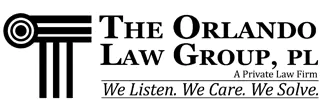It seemed extremely promising. The Paycheck Protection Program was the cornerstone of the federal government’s stimulus package designed to assist small businesses and their employees during this unprecedented shutdown and quarantine.
What is the Paycheck Protection Program?
The Paycheck Protection Program (PPP) is a federal government loan created to give an immediate incentive for small businesses to retain their workers by keeping them on the company’s payroll.
The U.S. Small Business Administration (SBA) had planned to forgive the loans if the company was able to keep all employees on the payroll for eight weeks. The money from the loan was intended to be used for payroll, rent, mortgage interest, or utilities.
What happened to the Paycheck Protection Program?
The short answer is that the PPP has run out of money. Thousands of businesses who qualified as potential borrowers are now unable to access funds through the now cash-empty program.
On April 16, 2020, The SBA announced that the Paycheck Protection Program would no longer be accepting applications from businesses seeking aid.
The shuttering of the $349 billion program leaves legions of businesses out in the cold. Many of these business owners were attracted to the program. It was designed to assist financially during the coronavirus-induced economic slowdown.
According to the SBA, the agency has approved more than 1.6 million PPP loan applications. The total of the requested funds amasses to a wallet-thinning $340 billion. That money is slated to be distributed by close to 5000 lending organizations.
Most borrowers are currently in a wait-and-see mode as they check their bank accounts for the loan deposit.
While it is impressive that the oft-criticized SBA was able to organize and implement this program in such short order, that’s no consolation to the business owners who were counting on the funds to keep the lights on, quite literally.
I applied but never got approved, or I never got to apply for the PPP. What do I do now?
The hard message is that the further away you are from loan approval, the less likely it is that you will see even a thin dime from the PPP.
While the SBA made their announcement on April 16, it’s likely that that 1.6 million applications were submitted and earmarked days ago. Unfortunately, there is no definitive answer aside from “ask your banker” about the status and likelihood of your loan.
So, if you are in the group that will not be funded, it’s time to start exploring other options. If you are driven to keep your business going through this economic slump, you are going to need to find a way to acquire funds. The Florida Bridge loan is also out of money but may receive additional funding. This was limited at $50,000; however. There are also additional SBA loan products which are traditional non-forgivable loans which still appear to be available at least for now.
Refinancing existing debt and/or liquidating unused assets is another approach. However, if neither of these options will help, bankruptcy might be an option. At a minimum, the protection the bankruptcy can offer you might give you the foothold you need to reorganize and come out of this above water.
We are offering a free 15-minute strategy session for businesses that are facing difficult choices because of financial or legal hardships. Give us a call at (407) 512-4394 and ask to speak to one of our business lawyers. This no-obligation session is designed to help you see your options more clearly.
Last Updated on April 16, 2020 by The Orlando Law Group








